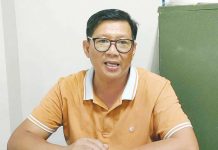
IN 2024, Western Visayas posted a 4.3% growth in its Gross Regional Domestic Product (GRDP), reaching P641.76 billion. At first glance, this is a sign of economic success — an indicator of progress. Yet, as we dig deeper, one must ask: does this growth truly translate into tangible improvements for the people, particularly those in the region’s rural and marginalized communities? Or are we simply celebrating numbers that mask deeper socioeconomic disparities?
GRDP, while a critical metric, offers a limited view of a region’s overall health. It focuses on the economic output of key sectors — services, industry, and agriculture — but does not capture the nuanced impacts of growth on everyday citizens. For instance, while the services sector, responsible for 66.5% of the region’s GRDP, saw a commendable 7.4% increase, the agriculture sector remained stagnant, with little to no growth. This discrepancy highlights a gap between sectors that drive the economy and the livelihoods of those who remain dependent on agriculture. For many in rural areas, agriculture is a way of life. Yet, with little to no investment in modernizing agricultural practices or adapting to climate change, these communities are left behind.
While industry has experienced growth, it has largely benefited urban areas where businesses and manufacturing hubs thrive. Meanwhile, rural communities struggle with the repercussions of a struggling agricultural sector. The rise in GRDP does little to alleviate poverty or improve employment opportunities for those who are most in need. In fact, the rural-urban divide in economic progress is widening, as the growth of industry and services fails to reach those who rely on farming, fishing, and other primary sector work for their survival.
Furthermore, GRDP does not account for the everyday challenges faced by households, such as rising costs of living, unemployment, or the precariousness of informal labor markets. Despite an increase in household spending per capita by 2.6%, this statistic alone fails to reflect the struggles of families grappling with inflation, stagnant wages, and inadequate social services. The real question is: is this growth reaching the people who need it the most?
The reality is that without addressing these foundational issues — poverty, employment, and household welfare — the economic growth reflected in GRDP becomes little more than a hollow achievement. Economic policies must not only focus on increasing the numbers in sectors like services and industry but also work toward creating an inclusive economy where all sectors, including agriculture, benefit. Support for small farmers, rural infrastructure, and access to modern technologies should be at the forefront of regional development strategies.
If we are to celebrate true economic success in Western Visayas, it must go beyond the numbers. It must be measured by how well the people — the ones who contribute to the economy — are truly faring.







